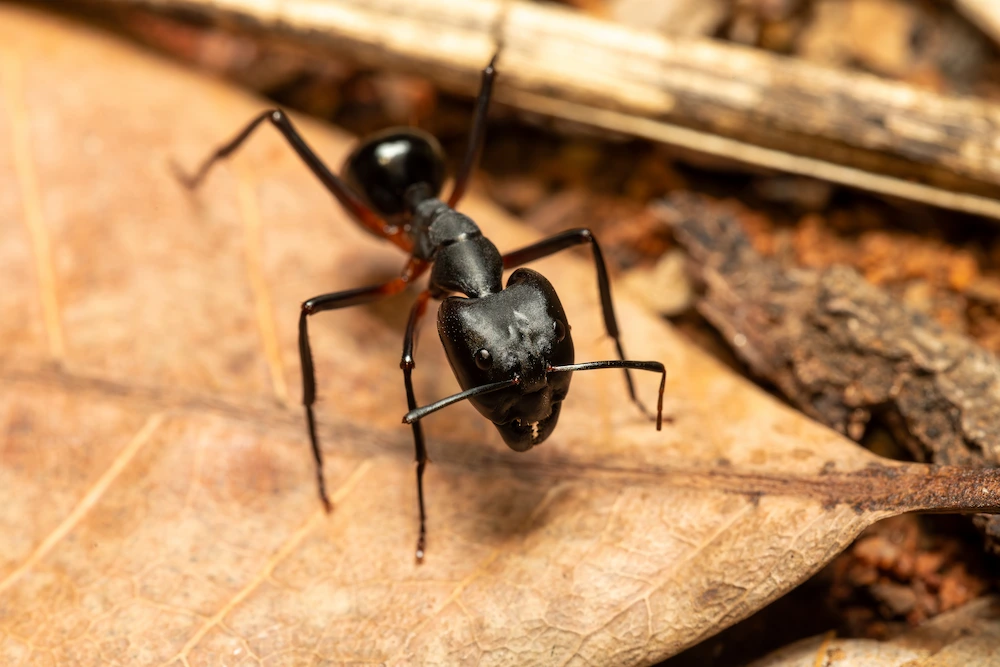Summary: Carpenter ants are a great example of teamwork in the pest world. This blog explores the facts, structure, preferences, and abilities of carpenter ants before diving into the best ways to control these pests. Romney Pest Control provides reliable pest control services for every season.
Another Valentine’s Day has come and gone, but the lingering pink-and-red decorations tell us it’s still the season of love. Platonic love between close friends or family members is also incredibly important. Believe it or not, you can actually see examples of love in the pest world — and we’re not talking about mates.
One pest that showcases this platonic love is the ant. Every ant is eusocial, meaning it lives and works in a colony descended from the same queen. Carpenter ants follow this same structure, and focusing on their unmatched teamwork seems fitting for this month. So let’s explore the lives and habits of carpenter ants that lend to their incredible teamwork!
The Basic Facts
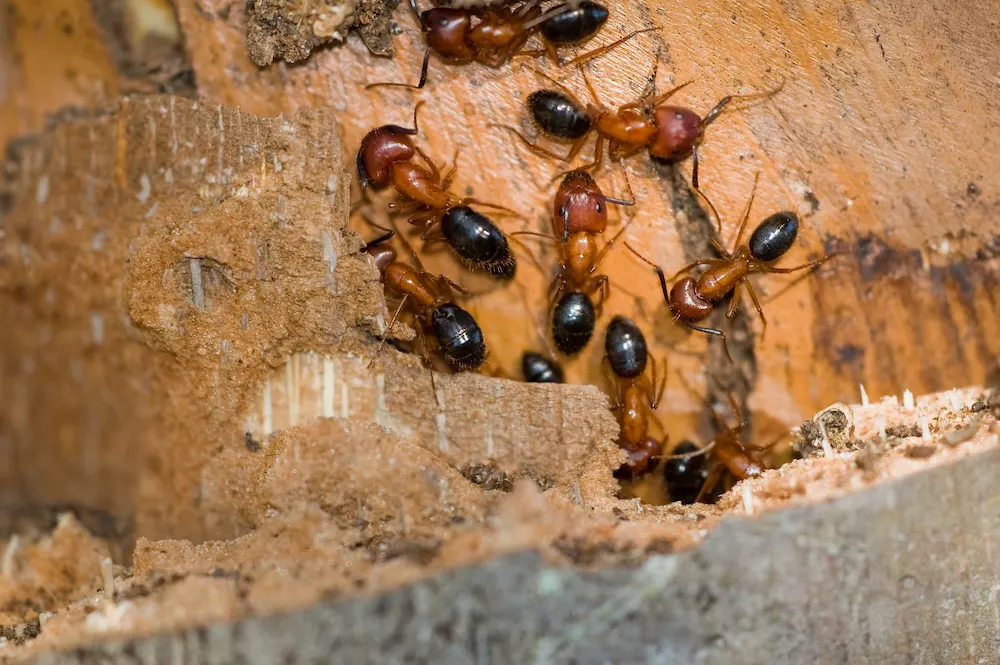
If you’ve never seen a carpenter ant, just imagine a normal ant with giant jaws (mandibles) and you’ve got the picture. The workers are up to 1/2 an inch long, while the queens are 1 inch long. They can be black, red, brown, or a combination of colors. The queen is rarely seen since she seals herself into the wood on day one of the colony.
The easiest way to tell the difference between carpenter ants and termites is to look at their bodies. Carpenter ants have their typical 3 segments, bent antennae, and large mandibles. Termites have two segments and straight antennae. Carpenter ant colonies take 3 to 5 years to produce swarmers (reproductive males and females) that leave to start a whole new nest.
As with any ant colony, carpenter ants are more active in the warm seasons. Queens usually lay eggs in late spring and summer that only hatch in warmth. They don’t typically invade the rooms of a house unless there’s a leak in the plumbing. If you’re side-eying the sharp mandibles, don’t worry: carpenter ants only bite if they’re handled!
Jobs For All Ants
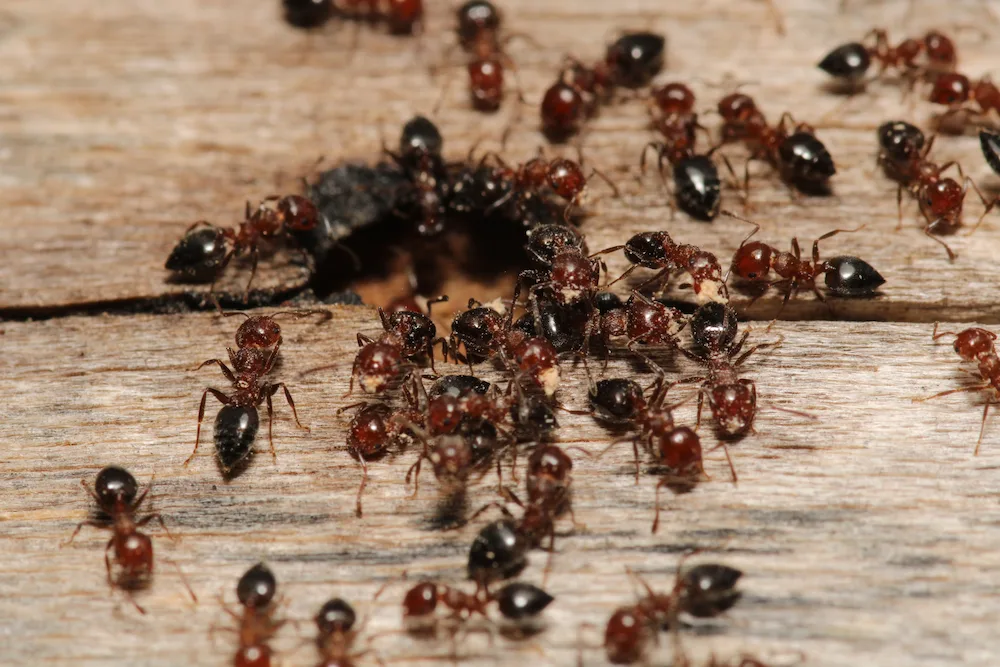
As we mentioned before, swarmers are the reproductive males and females. They mate in the spring, then the females find nesting sites to start their own colonies. Worker carpenter ants travel up to 100 feet for food, so finding ants near your pantry doesn’t necessarily mean they live in the kitchen.
The 3 classes of carpenter ants are:
- Queens — After mating and starting her nest, the queen sheds her wings. She lays a few eggs and feeds them until they’re adults, but these are the only ants she helps. The workers care for the next young so the queen can stay safe in her little cave.
- Workers — Similar to other ant colonies, worker carpenter ants do 98% of the work. Once they’re adults, they spend their days caring for their colony and nests. Workers gather food, create galleries, clean the nests, care for the young, and act as soldiers to defend the colony.
- Male Drones — Worker ants are sterile females, so male drones don’t serve much of a purpose besides mating with queen ants. The males also have wings so they can fly to meet their mates. Male drones die shortly after mating and don’t help with any of the nest duties.
Damage By Carpenter Ants
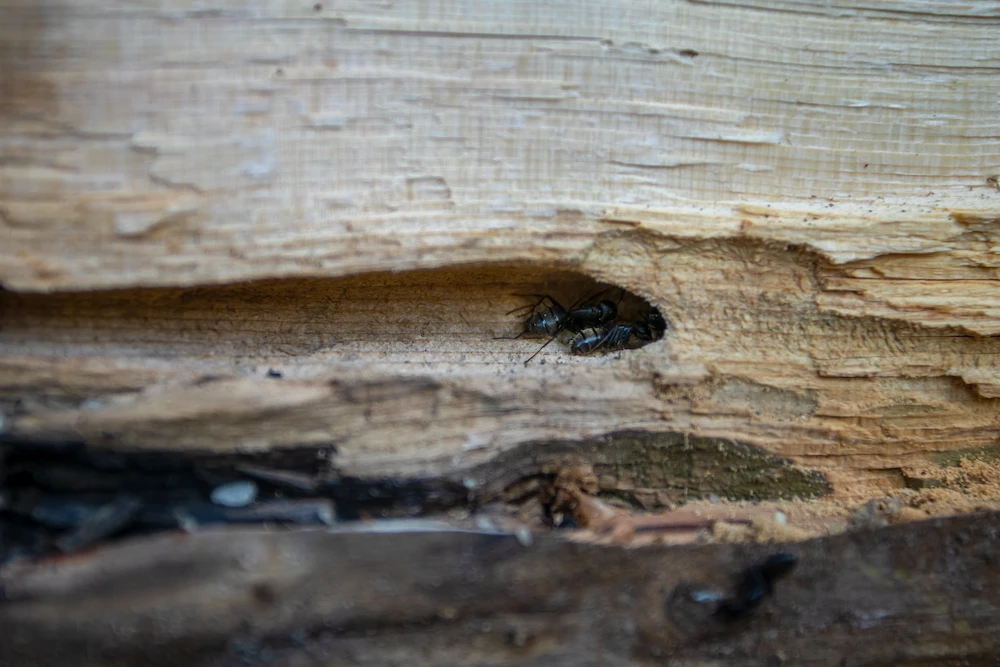
Carpenter ants are constantly compared to termites in terms of the damage they cause, but there’s a key difference between the two pests. Termites eat the wood they carve through, while carpenter ants do not. The ants eat insects, flowers, fruit, grease, meat, and other foods. But make no mistake: carpenter ants are still incredibly destructive despite their diets.
Carpenter ants often invade:
- Wooden fences
- Sheds
- House frames
- Crawl spaces
- Attics
- Door and window frames
These ants typically invade rotten or moisture-damaged wood because it’s easier to eat through than healthy wood. As the colony’s numbers grow, the workers expand the nest by creating more galleries in the wood. The more galleries they create, the further they weaken the wood. This is bad news when the structure was damaged before the ants arrived.
Teamwork Makes The Dream Work!
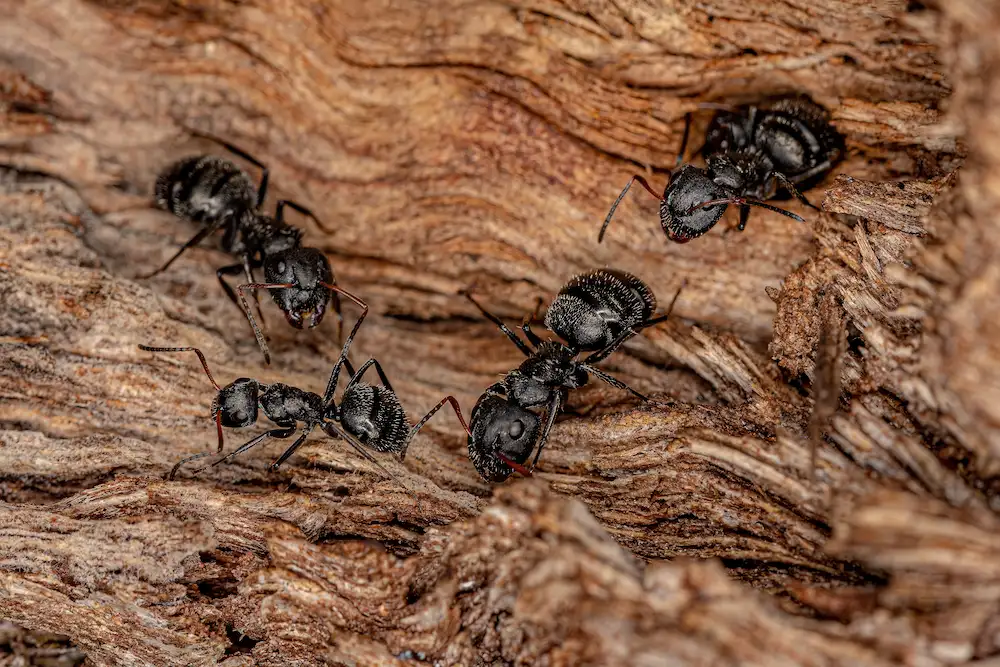
Everything that carpenter ants do is for the good of the entire colony. Their life purpose is to help the colony grow and thrive as they continue expanding the nest. The queen is sort of like a hands-off manager, in that she starts the colony and allows those workers to take over while she spends the rest of her long life (about 25 years!) producing eggs.
Carpenter ant colonies technically have multiple nests. The parent nest is the original gallery carved by the queen. It’s in moist wood that contains the queen, eggs, and young larvae. Workers create satellite nests, which are dry and contain the large larvae and pupae. The worker ants create pathways to travel between the parent and satellite nests.
Controlling Carpenter Ants
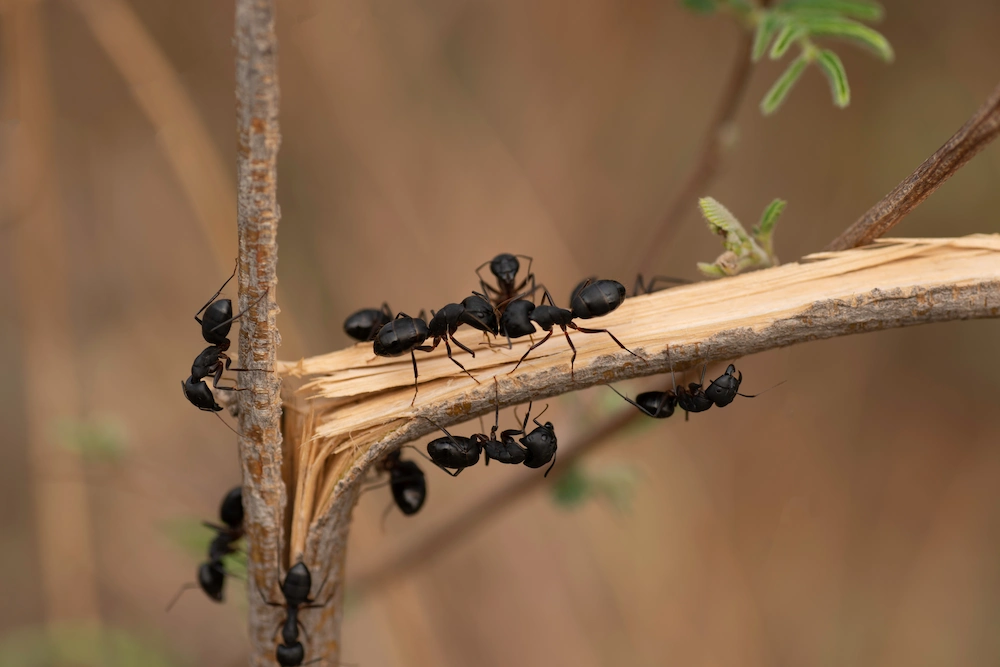
The key to controlling carpenter ants — as with any pest invasion — is awareness. It’s much more efficient to treat ants early in the infestation, rather than wait for the issue to grow. If you see discarded wings, sawdust, and carpenter ants in a specific area, there’s a good chance that carpenter ants live nearby.
The most efficient ways to prevent carpenter ants are:
- Repair damaged wood. This is the main target, so eliminate their preferred habitat by repairing damaged wood in your house and yard. Check for moisture damage after a heavy storm.
- Remove rotten wood. Rotten tree stumps and firewood are easy ant habitats when the wood is left alone. When wood is beyond repair, it’s best to remove it before carpenter ants find it.
- Use the right baits. If you want to solve a small ant problem yourself, make sure to use the right bait. These ants love carbohydrates and proteins, so your bait needs to have these in order to work.
- Contact professional pest control. If you discover a carpenter ant problem on your property, the best course of action is to have a professional solve it with their targeted treatments.
Romney’s Work Ethic Is Unmatched
Besides carpenter ants, the hardest-working team we can think of is Romney Pest Control’s team. Our licensed technicians don’t leave any pest problems unsolved. We start by inspecting the property for all signs of pest activity, removing spiderwebs and stinging pest nests along the way. Our observations then inform the customized treatment plan we create that targets each of your pest problems. We provide long-term solutions — not temporary fixes — for every pest issue because we want to protect your home year-round.
Instead of waiting for spring and summer to start pest control, try implementing preventative services before the pests start really causing trouble. Don’t delay: contact us today for a free quote on our reliable services!
Citations
Carpenter ants. (n.d.). Smithsonian. Retrieved February 5, 2025, from https://www.si.edu/spotlight/buginfo/carpenter-ants
Daw, S. (2019, November). Carpenter ant. National Park Service. Available at https://www.nps.gov/articles/carpenter-ant.htm (Accessed on February 5, 2025).
Jones, S. (Dr.). (2017, October 6). Carpenter ants. OSU: Ohioline. Available at https://ohioline.osu.edu/factsheet/HYG-2063 (Accessed on February 5, 2025).
Webb, W. D. (2024, May 8). Gaining control of structure-infesting carpenter ants. Pest Control Technology. Available at https://www.pctonline.com/article/gaining-control-of-structure-infesting-carpenter-ants/ (Accessed on February 5, 2025).

